The first time I tried jingalov hats was in Armenia this summer, en route to a big, Armenian wedding in the mountains of Lori.
Our bus made a pit stop at a market along the way, and before I knew it, someone had acquired a huge box filled to the brim with this flatbread. I’ll never forget the fresh, herb-filled smell that wafted from the box, let alone the earthy, flavorful and fresh herbs that came with each bite.
When I received an email announcing that the Armenian Church of the Holy Martyrs in Bayside, Queens was holding a cooking class to learn how to make jingalov hats, I jumped at the opportunity and immediately signed up.
Before I took the lesson, however, I wanted to learn more about this dish and its significance to Artsakh.
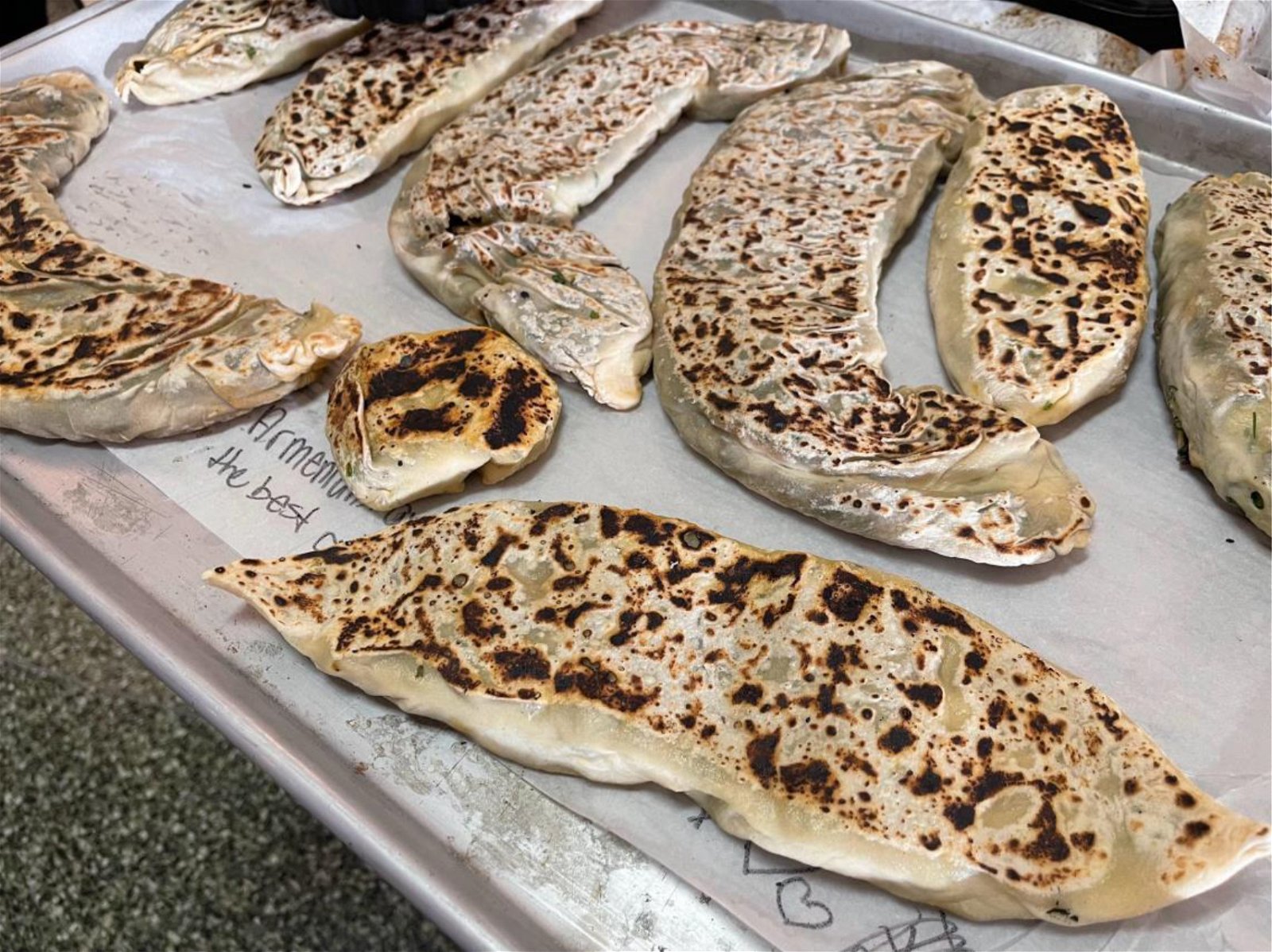
So, what exactly is jingalov hats?
Our priest, Father Abraham – whose mother is from Artsakh – shared with me that the origins of this dish come from the Artsakh dialect “jingal”, meaning greens or herbs native to the land. It’s an oval-shaped flatbread stuffed with all kinds of greens, pinched together and then fried in a pan. It turns out this nutrient-rich dish is also vegan-friendly and popular during the Lenten season.
According to Ara Zada, author of the infamous Lavash cookbook, you can make it in two ways: herbal or sour. If you crave a more herbal flavor, you can use greens like chervil, cilantro, dill, flat-leaf parsley or tarragon. If you’re looking for a more sour jingalov hats, you can use dandelion greens, radish tops, sorrel, arugula and watercress.
This bread is practically synonymous with Artsakh, considering it’s made from plants indigenous to the land. According to an article in the Armenian Weekly, jingalov hats originated during times of scarcity and was sometimes referred to as “forest bread,” likening it to the method of using whatever one could forage in order to survive.
Jingalov hats has been through the thick and thin of Artsakh history, especially rising to the challenge of feeding civilians during times of famine and war. According to Eurasianet, during the blockade of the Berdzor/Lachin corridor, markets turned to frying up this bread before supplies became scarce.
Our priest reiterated this sentiment: “It’s an Artsakh recipe, and [after making it] I just feel like I’m in Artsakh.” However, he lamented that nothing could ever replicate the taste of eating authentic jingalov hats. “This was wonderful, but it can’t really replicate [the real thing]. Especially knowing that today we won’t be able to go there again – but this dish gives us some hope that we will never, never forget Artsakh.”
How do you make jingalov hats?
“Dough, in our culture, needs a lot of massaging – play with it, put your soul into it.”
For the cooking class, we used a recipe loosely based on Lilia Harutunyan’s, a local baker from Artsakh published in the New York Times cooking section.
Our cooking session was led by Yerezkin (Fr. Abraham’s wife), who told me she has many friends from Artsakh and grew up eating this dish. She started by making the dough, which she handmade for us using two pounds of flour, two teaspoons of salt and warm water.
Co-teacher Elsie Halajian shared: “Dough, in our culture, needs a lot of massaging – play with it, put your soul into it.” That being said, our Der Hayr (priest) blessed our dough to ensure our souls and love were kneaded into the dish.
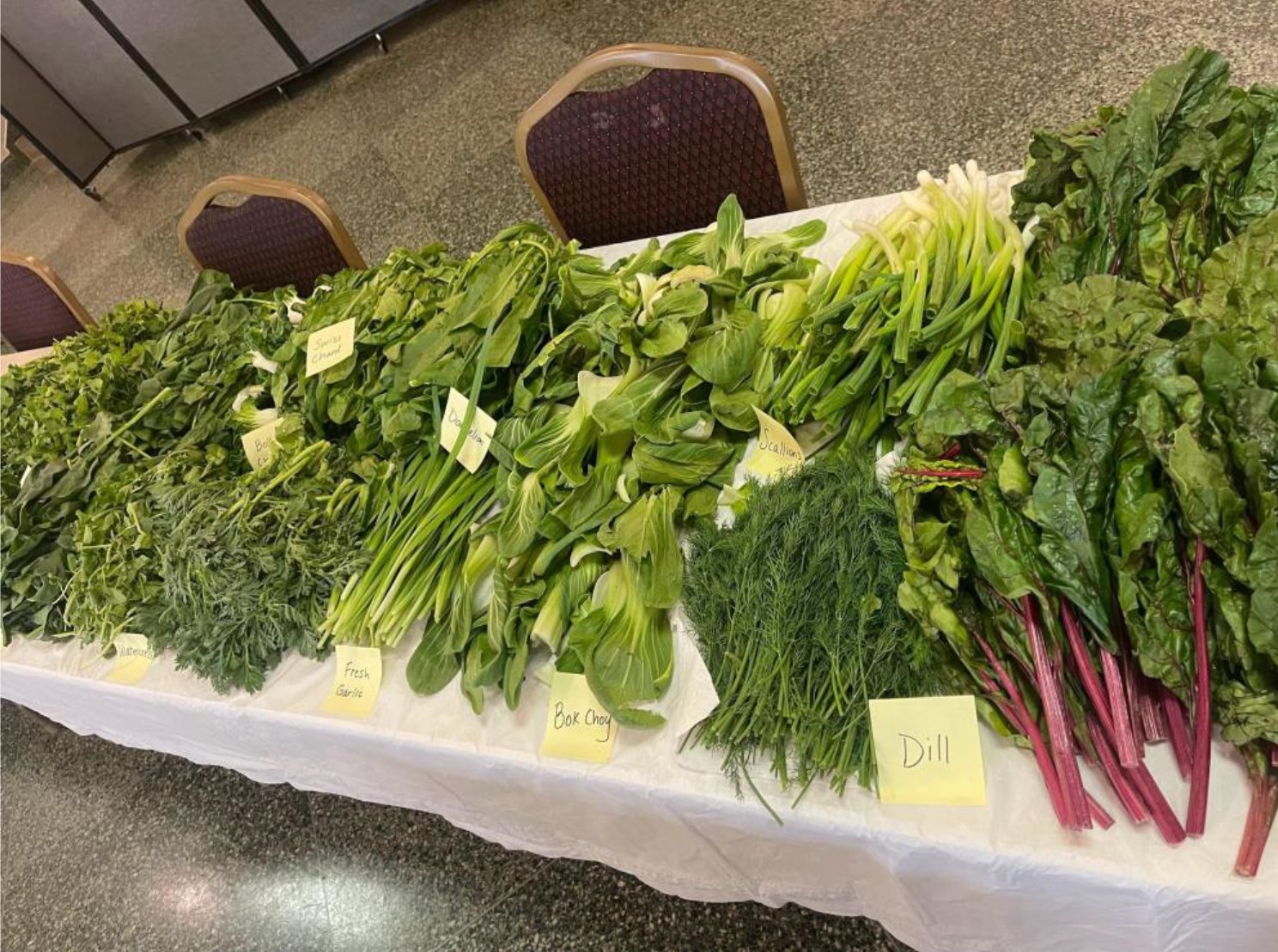
For a personal portion, use three cups of all-purpose pre-sifted flour, one teaspoon of kosher salt and three-fourths cup of lukewarm water. This was set aside to rest while we made lahmajun and selected our “jingal.”
Yerezkin had already washed, dried and labeled all of the greens herself, which saved us plenty of time. We got to select from a luscious green table overflowing with beet greens, dill, scallions, bok choy, fresh garlic, dandelion, swiss chard, spinach, mint, parsley, cilantro and even grape leaves.
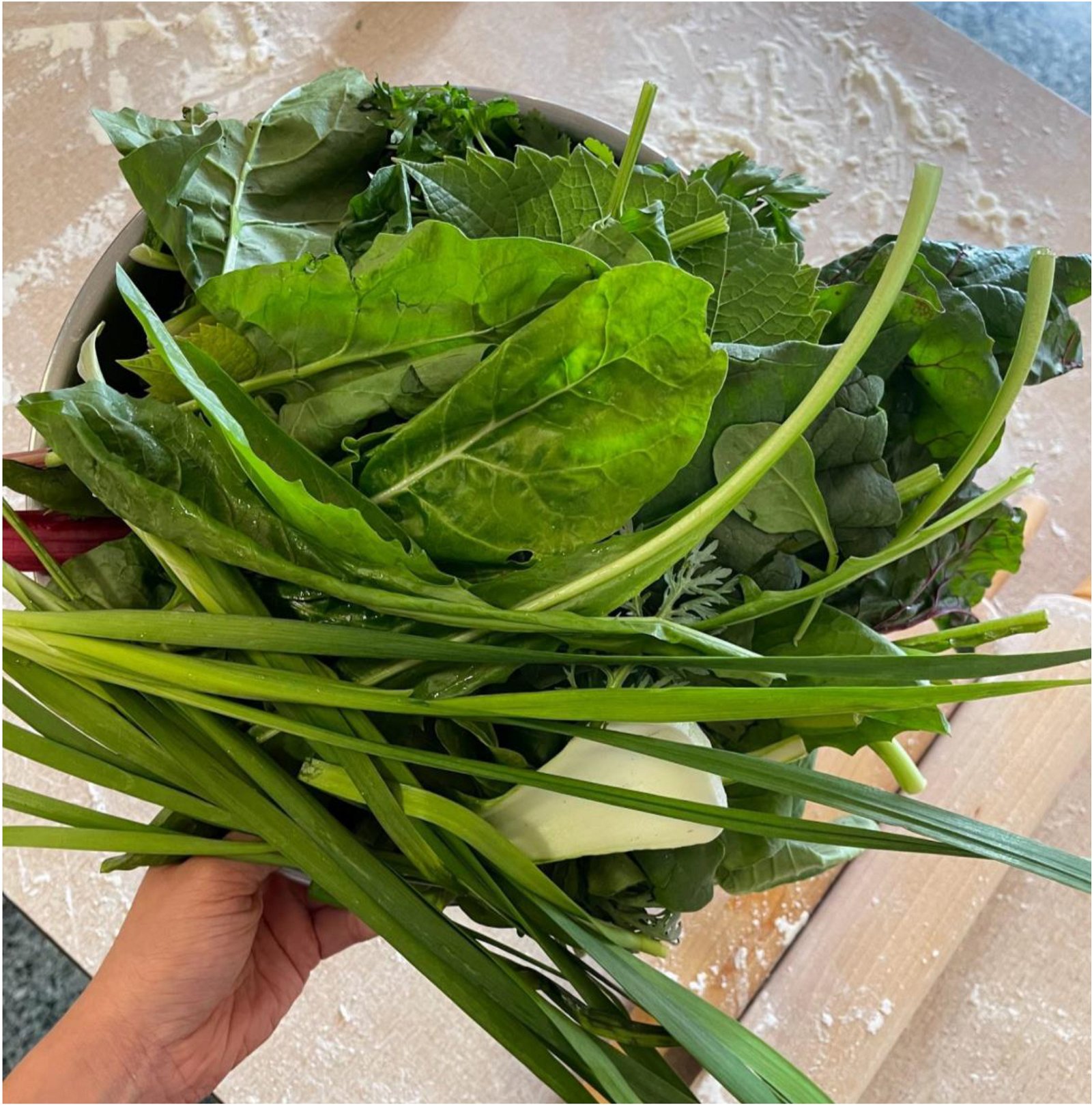
My table selected from almost all the greens, and we added in extra helpings of grape leaves, dill and spinach. We began by chopping everything, until Yerezkin informed us to not cut everything too small. The stems and all went into the filling too, which was surprising.
After tossing everything into a bowl, we added salt, paprika and olive oil. According to Harutunyan’s recipe, some even throw in pomegranate seeds if they enjoy a sweeter jingalov hats.
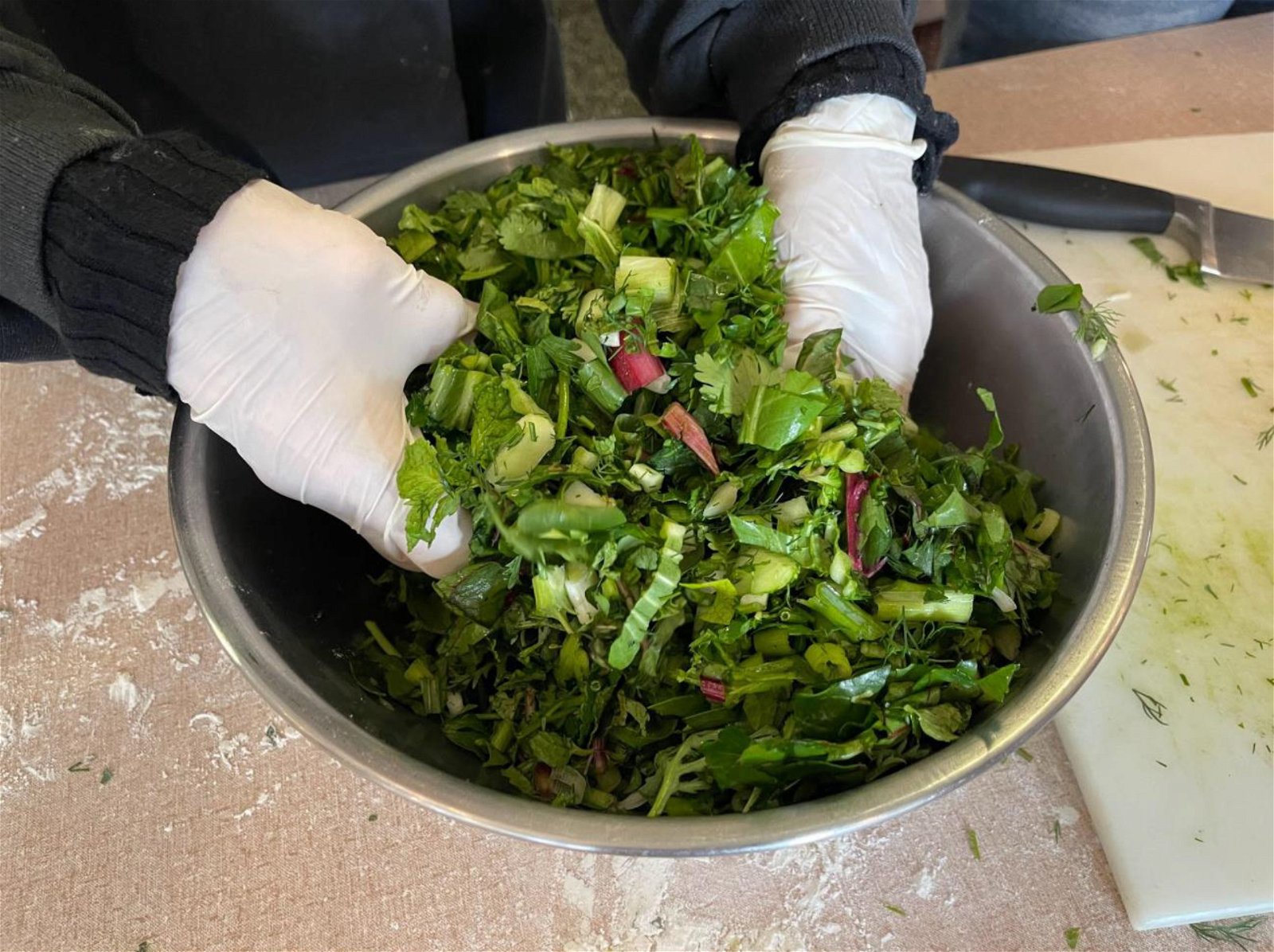
We then pieced off and rolled out our dough into oval shapes onto a flour-dusted surface. This was the tricky part – especially because Yerezkin taught us that the dough must be paper thin. I kept adding in more flour to keep the dough from sticking to the rolling pin. Many people took their own liberties while making the shapes of dough – some made massive, pizza-sized portions while kids made mini, handheld jingalov hats surprises.
After making imperfect football-shaped dough pieces, we filled them with as much greens as we could and then firmly pinched them shut and attempted to flatten them out.
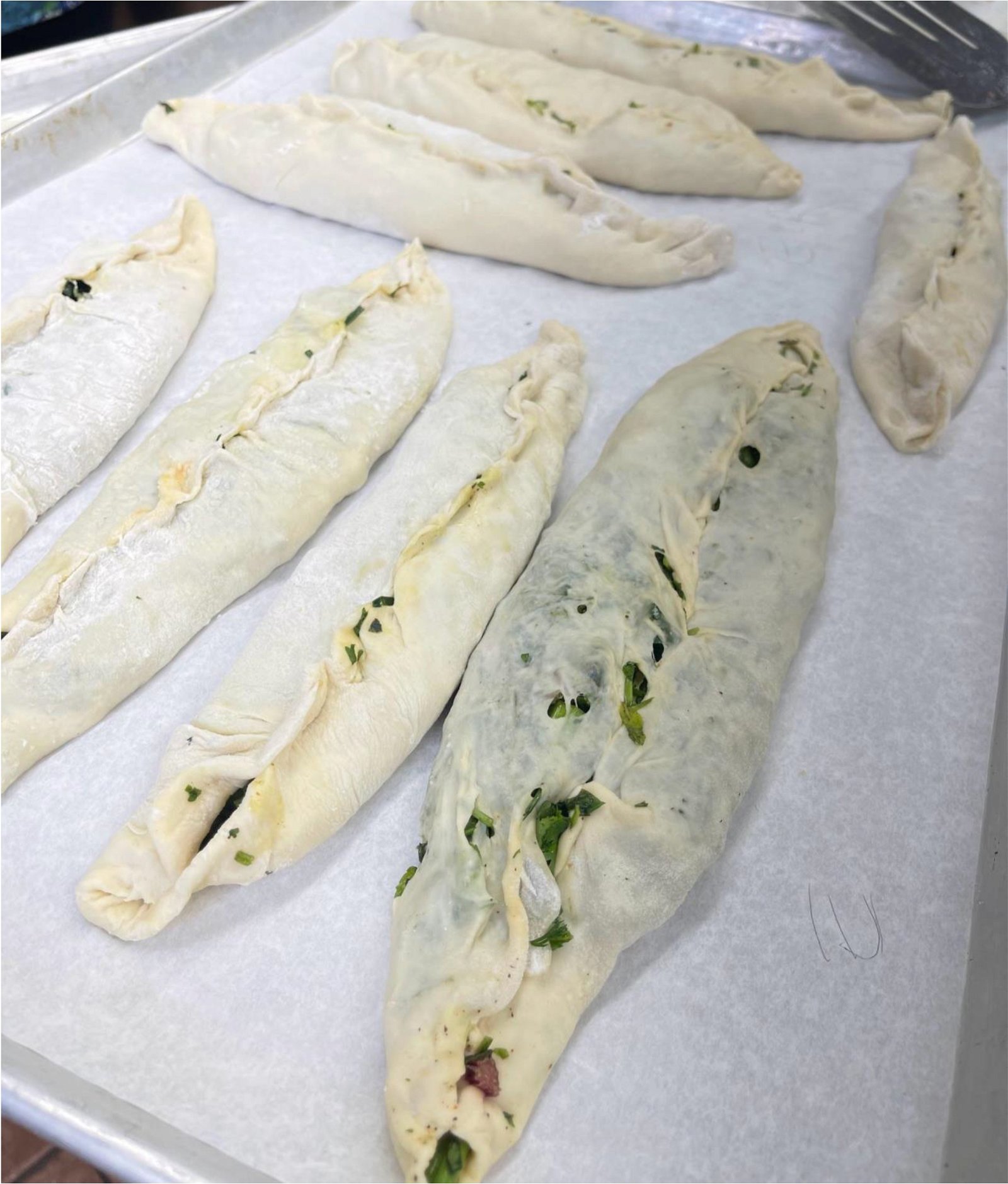
These were fried in pans with some oil for about three minutes on each side. Harutunyan’s recipe calls for sunflower oil, but we used the olive oil that was handy in our church kitchen. After each side had some nice char marks, we knew we were done and ready to eat our warm, fresh jingalov hats.
Jingalov hats is a healthy reminder that there is hope
Echoing what Father Abraham mentioned earlier, I couldn’t help but feel the tangible pride and hope seated within all generations of my Armenian community replicating this Artsakh-native dish.
Although I’m sure nothing will ever taste as good as authentic jingalov hats, we were able to pay homage to Artsakh’s identity – and I was reminded that no matter what, our culture can’t be erased.
I will definitely be making jingalov hats again – and I encourage all readers to try making it, too.



All Armenians must carry forward their unique and wordly culture to their next generations from their history, and tenacious faith, to their culture and the details to their foods.